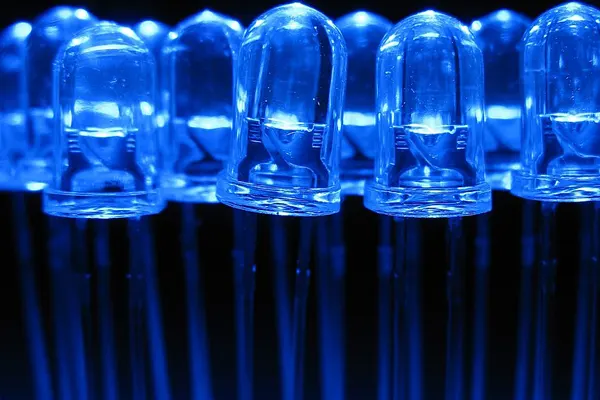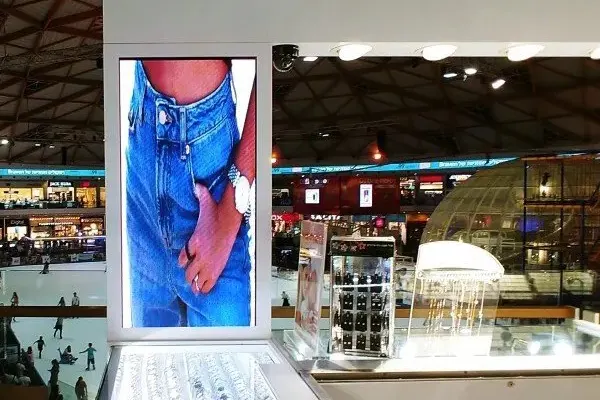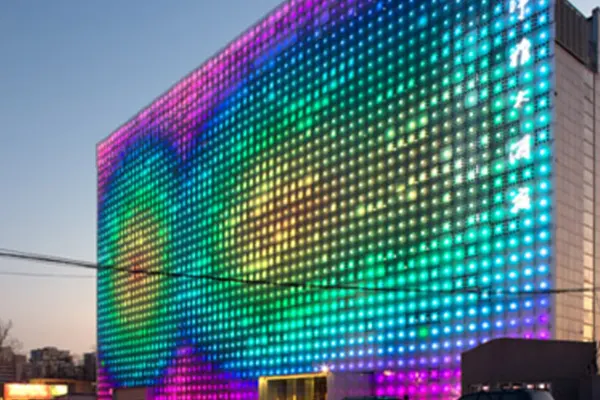The world has come a long way in a couple of decades. The same is the case for LED displays. We are now living in an era of narrow pixel pitch. Who could have thought about such advanced screens? The way you see them on roadsides. The way you are seeing them at busiest of the places. They are now the need in every house. Well! It’s ultimately a turnaround. It’s an inspiring evolution. Display screens have gained significant ground in the blink of an eye.
A few years ago, you saw only a red-colored display screen. What happened in a few years which brought such a change? You will find all the required details here! At present, you are living a life with multi-colored displays. Your thinking might have taken to the person who invented the LED display. To break your curiosity, we want to answer your question: what’s the history of LED display screens?
Let’s have an insight into this point.
How’s the LED display concept come to mind?
You have heard about light-emitting diodes. They are semiconductors. They are the source of light emitted only on the supply of current. It was a theory until 1907. Many changes bring about after world war II.

Source: Wikipedia
Henry Joseph Round put up the phenomenon of electroluminescence in 1907. It was the beginning of what you call a fantastic journey of screens. He ends up finding a glow surrounding the detector in his experiment. After this event, another significant discovery happens at British Marconi Lab. They found an apparent luminescent phenomenon in silicon carbide crystals.
In 1927, Oleg Vladimirovich Losev from Russia proved luminescence in semiconductor devices. It’s an embarkation of the progress of screens. Following this, there was a dormant phase of discoveries.
The industrial development era of semiconductors:
The industrial revolution occurred in the 20th century. Kurt Lehovec was on a mission to develop semiconductor lamps. Not only this, another scientist came up with the experiment. In 1955, Rubin Braunstein reported infrared radiation from gallium arsenide. These are the events leading to the ultimate discovery of display screens.
First appearance of an LED display:
In 1962, Nick Holonyak was a revolutionary man who brought LED to the world of technology. We remember him as the “father” of modern LEDs. He performed his experiment at general electric at the University of Illinois in the US. This LED was on the basis of GaP structure. These emit red and, to some extent, yellow-green lights. You would find the light efficacy of LEDs about 1-2 lumens/watt.
The wavelength emitted by LEDs was within higher limits of your eye perceptions. It was in the range of 500-600nm. Succeeding the LEDs development, the generation of display screens is just coming up. Two scientists then developed LED display screens:
- Howard C. Borden
- Gerald P. Pighini
In 1969, both of them brought in HP Model 5082-7000 numeric indicators. It was the first-ever intelligent LED display screen. They replaced the Nixie tube and changed the scenario for upcoming advancements. You would have to find the progress at a double rate every 30-36 months.

Source: Wikipedia
How’s a modern LED display start?
The world has always been a big challenge with advancements. You can not attract an audience by simple basic rules. You have to bring in something new to intrigue spectators. You have to make screens advanced. It leads to interesting upcoming years for display screens.
In 1968, an LED display came onto the scene. It was for the indicator Monsanto. Then, USA Hewlett-Packard (HP) Company officially released the first display for advertising purposes. It was time to take into notice two essential aspects. First, the range and flux of display screens were the targets of scientists afterward.
You may become fed up with only a red color. The wait was over for many people in 1976. Finally, Hewlett Packard Company fulfilled the expectations of spectators. They launched multi-colored display screens. People can see red-orange, yellow-green, and green displays for the first time.
28th of March 1991- the “birthday” of one of the famous blue light displays. Nichia Chemical company from japan laid its foundation. Dr. Nakamura was the father of blue LED displays. His invention leads to the production of multi-colored radiation.

Source: Wikipedia
Time of bright future for LED screens:
The luminous intensity and efficiency of screens are at their peak. In 1997, LEDs with white emitting light found their place in the LEDs world. Fred Schubert did it. Covert-light company released brand new display screens. You know the names of well-renowned companies:
- Hewlett Packard
- Nichia Chemical
- Cree
- Toyoda Gosei
All of them produced millions of display screens. It would shake you that millions of dollars laid for the upcoming projects. In 2000, many companies invested $70 million. In the middle of 2006, many of us saw the start of billboard advertising in the US. It’s the end of 2006 and the time for screens to become the need of everyone.
A significant loss for many countries as they have to invest vast amounts of money. In 2009, Cambridge University researchers rectified the problem. They reduce the production cost to less than 90%. They used silicon wafers on display screens.
By 2010, Nichia corporation started to work on the improvement of displays. They have hit the jackpot in no time. They have brought in up-to-date designs. Their displays show record efficiency. Analysts predict this event will sow the seed for upcoming advancement.
Applications of LED displays:
Everyone knows the common uses of display screens. But we will tell you the common markets for which LED screens are oxygen.
Retail:
Retail business depends on display screen for its advertisement. We use these screens in shopping malls, hotels, and restaurants. They grab the attention of pedestrians and drive them into the stores. These display screens have boosted the businesses of many brands. You can also find them in exhibitions. Well! The display screen is the heart of the retail market.

Corporate industry:
It is the area that surprises many of you. No one could have thought that such big screens come in their boardrooms. You can use it for smaller exhibitions and trade shows. Its progress is simply beyond expectations!
Film production and TV industry:
Award shows without display screens are boring. No one finds them attractive. Yet, it’s as essential to this industry as any actors or actresses. Not only are they using this for Blockbuster Movies but also for commercials. Music videos and shooting need an LED display.
The Mandalorian series are using display screens now. Virtual reality programs will work on the display screen. You can alter the entire graphic content in seconds. In short! TVs depend on displays to flourish.

What changes did the 21st century bring in the advancement of LED screens? (Projects of the 21st century)
-
Mitsubishi Electric Corporation
You will find a fantastic fact about this corporation. They have built the world’s largest display. They use Aurora vision technology. Its size is as large as the size of the big three tennis courts. With millions of screens installed, it provides unimaginable resolution.
You want to see a racing car in HD on a big screen. So you opt to go for this screen. You found them at the racecourse in Japan. It is worth $28 million. It presents the complete detail as you are racing by yourself.
-
LED screens at Olympics in Beijing, China
You will find one of the largest displays at Guangzhou TV Tower. It is one of the best representations of dynamic screens in china. Likewise, you will see vivid screens in Beijing. The government of China has made unique plans to launch them. The screen is present right above the head of the walking area. They use a combination of five screens. In short, it’s genuinely a giant screen.

Source: Greenpix
Hotels and casinos are moving towards LED screens. In China, Macao casinos are famous for their marvelous lighting system. They give tough competition to screens in Times Square in New York. The design of the Grand Lisboa hotel is unique. The design is like a yellow lotus flower. It’s an official symbol of Macao casinos. In the upcoming time, it will be a massive success for China. Daktronics made the display that contains more than 59000 pro pixel- lamps.
-
Times Square, New York
One of the world’s iconic locations is Times Square, New York. You know the building named 7TSQ building. It is none other than the building of New Year’s eve. Samsung screens take the place of the previous three displays used there. Its sole height is about 300 feet. It is even the fanciest and most expensive screen in the world. It uses 16 million elements in its making.
-
Trafalgar Square, London
Display screen installation changes the outlook of an area. For example, LED screens replaced the neon tube in Trafalgar Square. The display screen portrays a beautiful touch to the location. It has an artistic impact. You want to change the scenery of any site. Go for the display screen. It transforms the iconic scene of the most famous Square.
It has many exciting features. Its size is round, about 783.5 square meters. It has high resolution and several tiles. One fact captivates you without any doubt. It can run for almost 11.5 years continuously without damage.
-
Viva Vision in Fremont street, Las Vegas
There is $17 million worth of “Viva Vision” installed on Fremont street. With 2 million conventional lights, it replaces its predecessors. Besides, it gives an HD TV image. It is one of the latest and updated forms of display screens. It fits 30 m from the ground. Its size is the same as that of five football fields.
LG wants to sponsor the project to pay $2.25 million. They wanted the right to display this to more than 16 million viewers.

Source: Wikipedia
-
Podium skyscraper in UAE
You can think of mega displays on tall buildings. UAE is one of the top contenders for exciting display screens. This project was to build a podium (large LED screen ) in Dubailand. Unfortunately, you can only see the image from the far-off area. Because of its curve shape and 33 floors, you’ve to see it from a distance.
-
Robots of Dancing cranes, Singapore
It’s an animation show. The entire event consists of animations and electronics. For example, there was a dancing show of cranes in 3D. They use a combo of LEDs, lighting, and sound effects for this effect. It happened in the Singapore resort complex.
-
New Giza, Egypt
China tastes a great success in display screen modernization. One of its projects reaches the pyramids region in Egypt. They develop the project at New Giza in Egypt. Its installation process took almost a month. These are heat and sand-resistant screens.
Conclusion:
To sum up, the display screen is a pleasure and a source of comfort. It’s a promising sector for many people. We have given serious attention to the improvement of displays. This sector requires significant funds to grow further. The involvement of many retailers and investors brings a spark to display progress.
History will take you to the struggle for any invention. The history of the screen portrays that there is always room for improvement. It could be a smoother track. Nevertheless, you can make such technologies that wow the crowd. Apple has been on a mission to form a micro-LED screen.
Well! By now, LED display still needs to reach their true potential. But breathtaking advancements are going to occur sooner or later! Just stay tuned; we will update you on the LED screens extravaganza!


